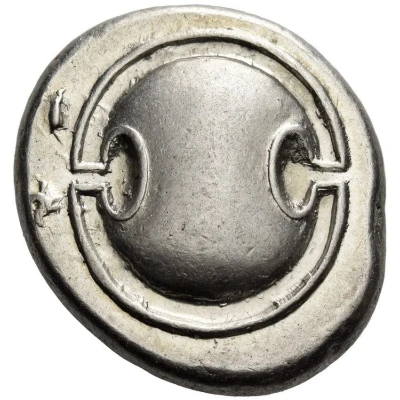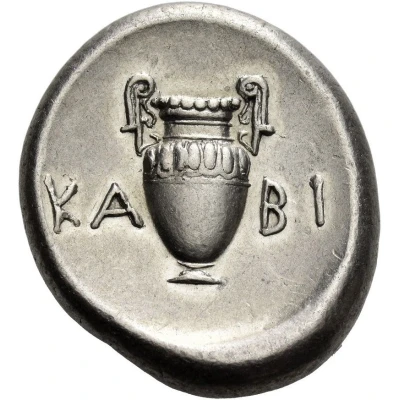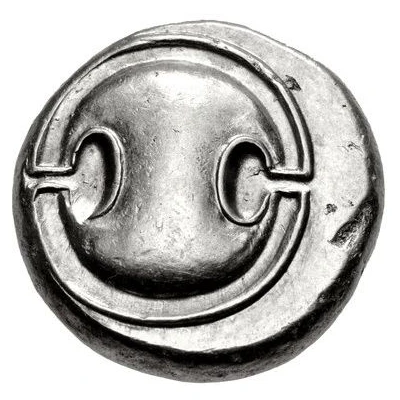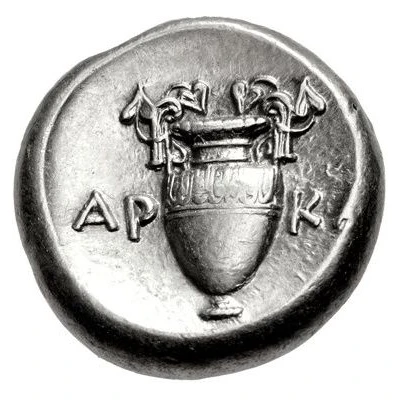


© Numismatica Ars Classica NAC AG
Stater - Kabi 368 BC - 364 BC
| Silver | 12.12 g | 21 mm |
| Issuer | Thebes (Boeotia) |
|---|---|
| Type | Standard circulation coin |
| Years | 368 BC - 364 BC |
| Value | Silver Stater (3) |
| Currency | Drachm |
| Composition | Silver |
| Weight | 12.12 g |
| Diameter | 21 mm |
| Shape | Round (irregular) |
| Technique | Hammered, Incuse |
| Orientation | Variable alignment ↺ |
| Demonetized | Yes |
| Updated | 2024-10-09 |
| Numista | N#391037 |
|---|---|
| Rarity index | 100% |
Reverse
Amphora, two ivy leaves on each handle; in field, KA –BI. All within incuse circle.
Script: Greek
Lettering: KA –BI
Interesting fact
The Kabi Stater was used as a form of currency in ancient Greece during the 4th century BC. Its name "Kabi" is derived from the ancient Greek word "kabios," which means "a weight of 12 drachmas." The coin was first introduced by the Theban general Epaminondas in 368 BC, and it quickly became a widely accepted form of currency throughout Greece. The Kabi Stater was made of silver and weighed 12.12 grams, which was equivalent to 12 drachmas. It featured an image of a shield on one side and a helmet on the other, symbolizing the military power and strength of Thebes. The Kabi Stater was an important part of ancient Greek commerce and trade, and it remained in circulation for over a century.
Price
| Date | Mintage | VG | F | VF | XF | AU | UNC |
|---|---|---|---|---|---|---|---|
| ND (368 BC - 364 BC) | - | - | - | - | - | - |
Values in the table are based on evaluations by sales realized on Internet platforms. They serve as an indication only for Stater - Kabi (368 BC - 364 BC) coin.



